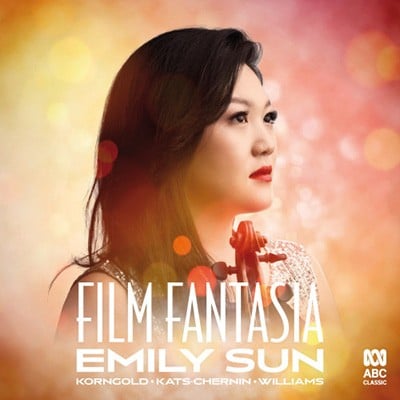2(I,II=picc).2(II=corA).2(II=bcl).2-2.2.2.1-timp.perc(2)-harp-strings(12.10.8.8.6)
Abbreviations (PDF)
Bote & Bock
This work was commissioned by the Adelaide Symphony Orchestra with generous support from Mary Lou Simpson OAM. Mary Lou and I have known each other for many years, this being our third composing project together. The much-loved international soloist Emily Sun had mentioned through our shared agent that she had long wished to play a violin concerto written by me, and I wrote Fantasie especially with her in mind.
This Concerto was inspired by some of the ideas from a 1920s German silent film. At the core of the film is a tragic human story of love and betrayal that takes place inside the fairground and circus world, most of the show scenes performed at a renowned Berlin venue that still exists today, called Wintergarten. For this concerto, I felt that I could build upon such contrasting themes as light and shadow, tango and chaos, showy or surreal atmosphere, yearning, lyrical or foreboding: all those opposing or related themes would give Emily a great vehicle to showcase virtuosity, and edgy sounds, as well as heartbreakingly poetic suspended lines.
From the textural point of view the violin writing moves between soloistic, and prima inter pares in a symphonic way.
It is in three distinct movements, and there are motivic elements that are weaving through all three movements in different guises.
First movement:
After a short introduction a recurring four-note tango motive appears in the violin’s lowest register, which is followed by a succession of unsettling motives. This movement finishes with a highly punchy, sonorous, rhythmic dance firstly in C minor and, after a short interjection, in D minor.
Second movement:
Sombre blues-like phrases in the low woodwinds build the introduction. Violin appears with long notes eerily caressing the gentle chordal and melodic patterns of the strings. The horn and trumpets herald the return of the winds and brass, with trumpet, piccolo and flute playing the eerily long notes and violin taking on a role of gentle colour wrapping. The chord of G seventh is a climactic point of this movement, which then concludes in a subdued manner, with the reprise of the introduction material.
Third movement:
It begins with what I call the “fatal clamation sequence”. The following violin solo theme, with its somewhat morbid cabaret style accompaniment (mostly in brass and strings), reflects the entangling nature of the salon and circense atmosphere.
The culmination of the essence of all the previous material arrives when the initial four-note tango returns, announced by big orchestra chords, almost like a march. It morphs into the final, resolving phase of the Fantasie, which includes a violin cadenza referencing the “fatal clamation sequence” of the start of this movement, leading into a mournful lament.
Elena Kats-Chernin, March 2023
"Listening to this complex and intricate work was an engrossing experience. It has a strongly theatrical flavour, opening with a tango theme and interlaced throughout with swirling dance themes, the violin sometimes emerging from these themes and sometimes contrasting with them. The style of the music evokes 1920s German popular culture but it’s also infused with the music of the salon and of the Romantic era... Kats-Chernin’s Fantasie im Wintergarten is a magnificent addition to her oeuvre and to violin literature."
Limelight

Emily Sun, violin / Adelaide Symphony Orchestra / Benjamin Northey
ABC Classic ABCL0102

